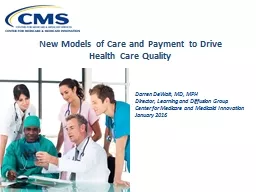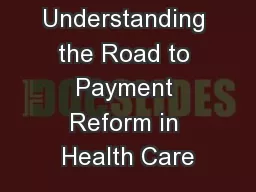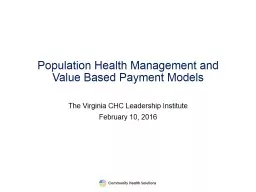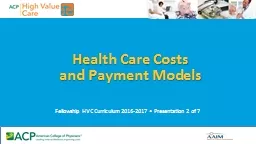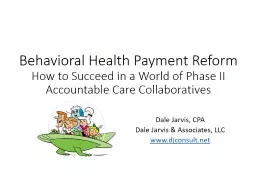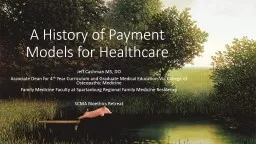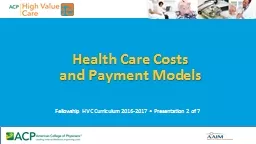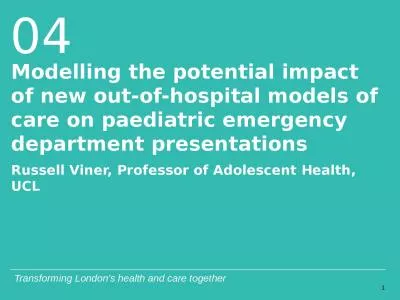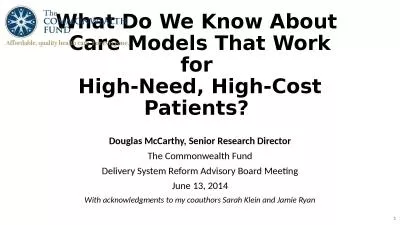PPT-New Models of Care and Payment to Drive
Author : marina-yarberry | Published Date : 2018-09-20
Health Care Quality Darren DeWalt MD MPH Director Learning and Diffusion Group Center for Medicare and Medicaid Innovation January 2016 Better Smarter Healthier
Presentation Embed Code
Download Presentation
Download Presentation The PPT/PDF document "New Models of Care and Payment to Drive" is the property of its rightful owner. Permission is granted to download and print the materials on this website for personal, non-commercial use only, and to display it on your personal computer provided you do not modify the materials and that you retain all copyright notices contained in the materials. By downloading content from our website, you accept the terms of this agreement.
New Models of Care and Payment to Drive: Transcript
Download Rules Of Document
"New Models of Care and Payment to Drive"The content belongs to its owner. You may download and print it for personal use, without modification, and keep all copyright notices. By downloading, you agree to these terms.
Related Documents

